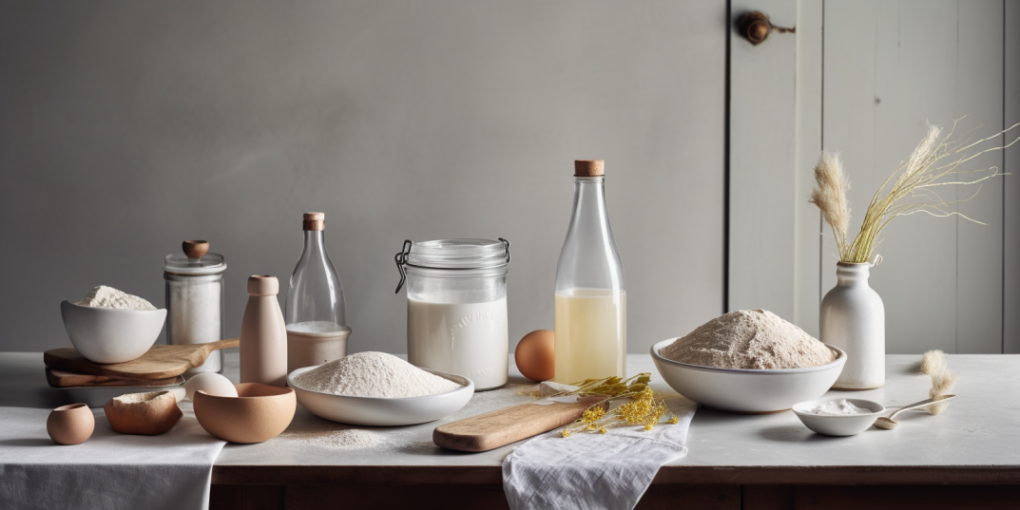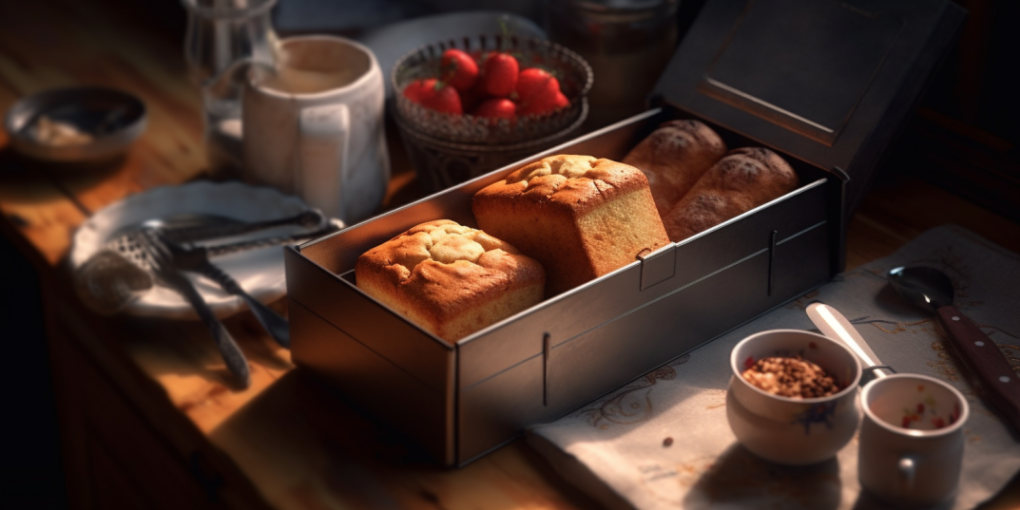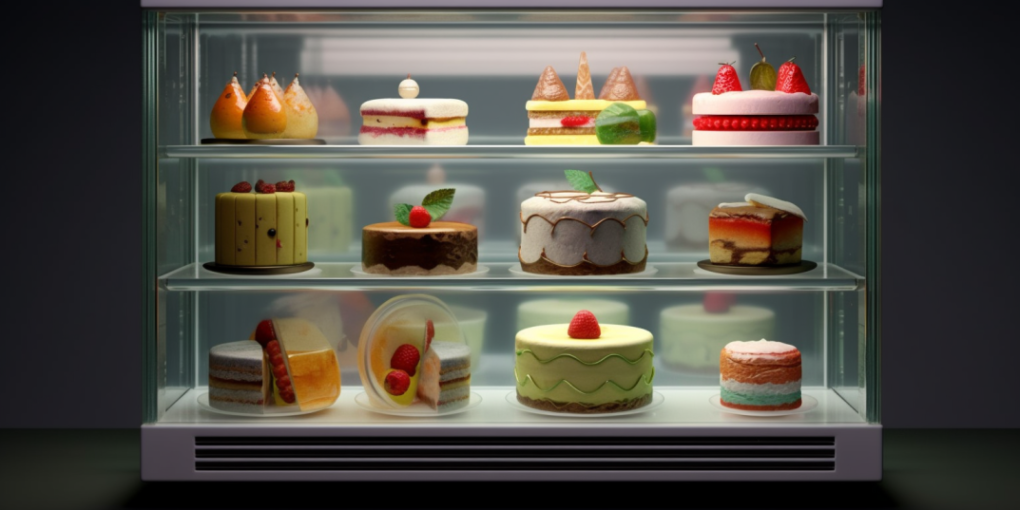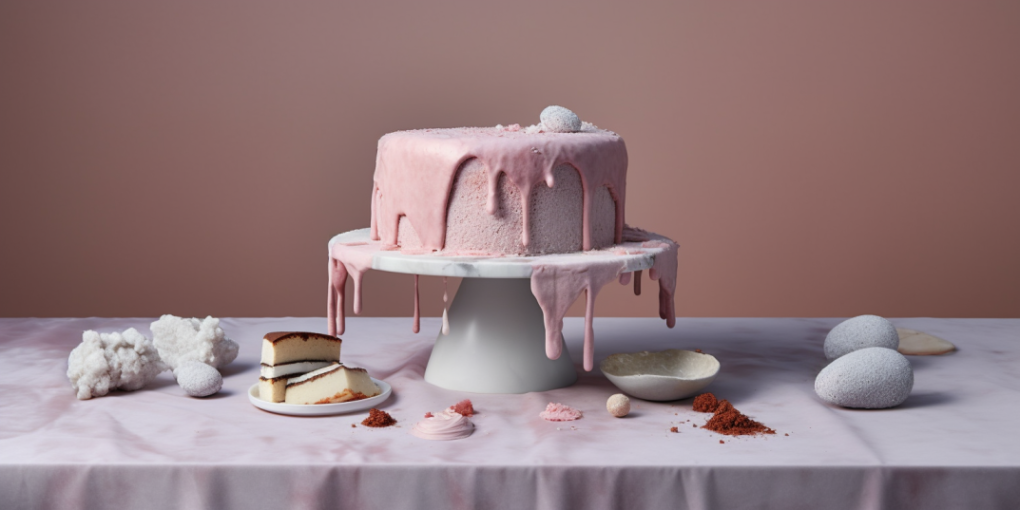
The Shelf Life of Cakes: Understanding Factors and Storage Techniques
A delicious piece of cake is a universally loved dessert. Whether it’s for a celebration or a comforting treat, cakes often take center stage. However, one critical question that arises is, ‘how long can a cake last in the fridge?’ The longevity of a cake in refrigeration can vary significantly based on multiple factors, including the cake’s composition, the ingredients used, storage conditions, and the temperature of the fridge. This detailed guide aims to demystify these aspects and provide practical advice on maintaining the freshness of your cakes.
Understanding the Impact of Cake Types and Ingredients
Type of Cake
It’s imperative to recognize that different types of cakes have different shelf lives primarily because of the ingredients involved. For instance, a fruitcake can last up to several weeks, while a sponge cake may only stay fresh for a couple of days.
Average Shelf Life of Different Types of Cake in the Fridge
| Cake Type | Shelf Life |
|---|---|
| Sponge Cake | 1-2 days |
| Pound Cake | 3-4 days |
| Cheesecake | 5-7 days |
| Fruitcake | 1-2 weeks |
| Black Forest Cake | 3-4 days |
| Birthday Cake (Iced) | 3-5 days |
| Carrot Cake | 3-5 days |
| Angel Food Cake | 2-3 days |
Ingredients Used

Cakes that include perishable ingredients, such as dairy products, eggs, or fresh fruits and vegetables, tend to have a shorter shelf life than those made with non-perishable or long-lasting ingredients. For example, a buttercream-frosted cake can stay fresh for a longer period than a cake topped with whipped cream frosting, as dairy-based frostings tend to spoil faster. Here’s a breakdown:
Estimated Shelf Life of Cake Based on Key Ingredients
| Key Ingredient | Estimated Shelf Life |
|---|---|
| Dairy-based | 3-4 days |
| Sugar-based | 5-7 days |
| Butter-based | 4-5 days |
| Fruit/Vegetable-based | 3-5 days |
| Alcohol-based (like fruitcakes) | 1-2 weeks |
Part 2: Exploring the Role of Storage Conditions and Preparation

Storage Conditions
Properly storing a cake is essential to maintain its freshness and texture. The storage conditions, including whether the cake is covered, sliced, or whole, as well as the temperature and humidity level of the storage environment, play a crucial role. Here are some detailed guidelines for storing cakes:
| Storage Condition | Guidelines |
|---|---|
| Coverage | It is important to cover the cake properly to prevent moisture loss and maintain its freshness.Use a cake dome, plastic wrap, or an airtight container to cover the cake.Ensure that the cover completely seals the cake to prevent air exposure. |
| Slicing | If the cake has already been sliced, store it properly to prevent drying.Use plastic wrap or place the sliced portions in an airtight container.Ensure that each slice is individually wrapped or separated to maintain freshness. |
| Whole Cakes | Allow the cake to cool completely before storing.Place the cake on a cake board or plate before covering to provide support.Cover the entire cake, including the top, sides, and bottom, with an airtight covering. |
| Temperature | The temperature at which the cake is stored can affect its texture and freshness.Store the cake in the refrigerator, as cooler temperatures help to maintain freshness.However, avoid storing the cake in the freezer unless it has been specifically designed for freezing. |
| Humidity | Humidity levels can also impact the quality of the cake during storage.Keep the humidity level low to prevent the cake from becoming excessively moist or sticky.Avoid storing the cake in a humid environment, such as near open containers of liquid or in a moist refrigerator compartment. |
Preparation and Handling
The way a cake is prepared and handled plays a crucial role in its shelf life and overall quality. Proper techniques and practices can help minimize the risk of bacterial contamination and maintain the freshness of the cake. Here are some detailed guidelines for the preparation and handling of cakes:
| Preparation and Handling | Guidelines |
|---|---|
| Ingredients | Use fresh and high-quality ingredients to ensure the best flavor and texture.Check the expiration dates of perishable ingredients such as eggs, milk, and butter.Avoid using ingredients that show signs of spoilage or have an off odor. |
| Utensils and Equipment | Ensure that all utensils, bowls, and baking pans are thoroughly cleaned before use.Grease and flour the baking pans properly to prevent sticking and ensure easy removal of the cake.Use non-reactive utensils, such as stainless steel or silicone, to avoid any unwanted chemical reactions. |
| Baking and Cooling | Follow the recipe instructions for baking time and temperature to achieve the desired results.Do not overbake the cake, as it can lead to dryness and loss of moisture.Once the cake is baked, remove it from the oven and place it on a wire rack to cool completely. |
| Storing | Properly store the cake to maximize its shelf life and maintain its freshness.Allow the cake to cool down completely before storing to prevent condensation and soggy texture.Use appropriate storage containers, such as a cake dome, plastic wrap, or airtight containers, to cover the cake. |
Part 3: Best Practices for Storing Cakes in the Fridge

To maintain a cake’s freshness, there are several key steps one can follow:
Cool Before Storing
Properly cooling a cake before storing it is essential to maintain its texture and prevent moisture buildup. This guide provides step-by-step instructions to ensure your cake cools adequately before refrigeration, minimizing the risk of a soggy outcome. Follow these guidelines to preserve the freshness and deliciousness of your cake.
- Allow Sufficient Cooling Time: After removing the cake from the oven, set it on a heat-resistant surface and leave it in the pan for about 10 minutes to allow it to set and firm up slightly;
- Transferring the Cake: Place a wire cooling rack on top of the cake pan. Hold the rack and the pan together firmly, then carefully flip them over and gently lift the pan away, ensuring the cake remains on the wire rack;
- Cooling on a Wire Rack: Find a cool, well-ventilated area and place the wire rack with the cake there. Make sure there is ample space around the cake to allow air to circulate freely. Avoid placing the cake near direct sunlight, as it can cause uneven cooling;
- Cooling Time: Allow the cake to cool completely on the wire rack. Depending on the size and type of cake, this may take anywhere from 1 to 3 hours;
- Testing for Coolness: Gently touch the top of the cake with clean fingers. If the cake feels completely cool to the touch, it is ready for storage. Avoid pressing too hard, as it may leave indentations on the cake’s surface;
- Preparing for Storage: Once the cake has cooled, you can choose to store it in the refrigerator. Place the cake on a sturdy plate or cake stand to avoid damage during transportation;
- Preventing Moisture: Before storing the cake, ensure it is fully covered to prevent moisture loss or absorption. Use plastic wrap or an airtight cake container to seal the cake. Alternatively, you can wrap the cake with several layers of plastic wrap;
- Labeling and Dating: If you have multiple cakes or plan to store the cake for an extended period, label it with the date of storage. This helps you keep track of its freshness and prioritize consumption.
Estimated Cooling Time for Different Types of Cakes
| Cake Type | Cooling Time |
|---|---|
| Single Layer (9-inch) | 1 to 1.5 hours |
| Single Layer (12-inch) | 2 to 2.5 hours |
| Double Layer (9-inch) | 2 to 3 hours |
| Double Layer (12-inch) | 2.5 to 3.5 hours |
| Bundt Cake | 2 to 2.5 hours |
| Cheesecake | 3 to 4 hours |
| Cupcakes | 30 to 45 minutes |
Note: Cooling times may vary depending on the recipe, climate conditions, and individual oven performance.
Cover Properly
To preserve the freshness and quality of your cake during storage, it is essential to cover it properly. This prevents the cake from absorbing other odors from the fridge and helps to maintain its moisture content. Follow these steps to ensure effective covering:
- Materials Needed: Plastic wrap or aluminum foil, cake carrier (optional, for decorated cakes);
- Wrapping the Cake: Ensure the cake has completely cooled before covering it and place it on a clean, flat surface;
- Using Plastic Wrap: Tear off a sheet of plastic wrap that is larger than the size of the cake, gently drape it over the top of the cake, ensuring it covers the entire surface, carefully tuck the sides of the plastic wrap around the cake to create a tight seal, and use additional sheets if needed for larger or layered cakes, making sure to cover all exposed areas including the sides;
- Using Aluminum Foil: If preferred, tear off a sheet of foil larger than the cake’s size, place it over the cake, and gently press it down to cover the entire surface, fold the edges of the foil over the sides of the cake, and secure it tightly;
- Cake Carrier (for decorated cakes): Consider using a cake carrier if your cake has delicate icing or decorations, place the cake on a sturdy plate or cake stand inside the carrier, and close the carrier securely to ensure a tight seal.
Pros and Cons of Different Cake Covering Materials
| Covering Material | Pros | Cons |
|---|---|---|
| Plastic Wrap | Provides an airtight seal | May stick to delicate icing |
| Aluminum Foil | Offers good protection | Can flatten decorative elements |
| Cake Carrier | Preserves icing and decorations | Requires additional storage space |
Note: Choose the covering material that best suits your specific cake and storage needs.
Slice After Storing
To maintain the freshness of your cake for an extended period, it is recommended to keep it whole until you are ready to serve it. Slicing the cake exposes more surface area to the air, which can lead to faster drying and potential loss of moisture. Follow these guidelines for optimal cake storage and slicing:
- Whole Cake Storage: Store the whole cake, properly covered with plastic wrap, aluminum foil, or a cake carrier, in the refrigerator or a cool, dry place, ensuring it is stored away from strong-smelling foods to prevent flavor absorption;
- Cake Preservation Duration: Depending on the recipe and storage conditions, a whole cake can typically stay fresh for 3 to 5 days; however, always check for any signs of spoilage, such as mold or an off smell, before consuming;
- Slicing Timing: Slice the cake only when you are ready to serve it, as keeping the cake whole helps maintain its moisture and flavor for a longer duration.
Pros and Cons of Slicing a Cake Before or After Storing
| Slicing Method | Pros | Cons |
|---|---|---|
| Before Storing | Allows for convenient individual portions | Increased risk of drying and loss of moisture |
| After Storing | Maintains cake freshness for longer | Requires additional slicing preparation |
Note: Slicing the cake before storing may be suitable for certain occasions or if you prefer pre-portioned servings. However, for maximum freshness, it is recommended to slice the cake after storing.
Store in the Coldest Part of the Fridge
To ensure the optimal preservation of your cake, it is important to store it in the coldest part of the refrigerator. Temperature fluctuations caused by frequent opening and closing of the fridge door can affect the quality and freshness of the cake. Follow these guidelines for proper cake storage:
- Find the Coldest Area: Locate the coldest part of your refrigerator, typically at the back, away from the door, as this area experiences less temperature variation when the fridge door is opened and closed;
- Clear a Space: Create enough space in the chosen area to accommodate the size of your cake and remove any items that may obstruct proper air circulation around the cake;
- Use a Sturdy Plate or Cake Stand: Before storing it, place the cake on a sturdy plate or cake stand to protect its shape and prevent potential damage during storage;
- Cover the Cake: Properly cover the cake using plastic wrap, aluminum foil, or a cake carrier to prevent it from drying out and to protect it from absorbing unwanted odors from other foods in the fridge;
- Position in the Coldest Area: Carefully position the covered cake in the coldest part of the fridge, away from the door, to maintain a consistent and cool temperature around the cake.
Part 4: Identifying Spoiled Cake

Before consuming a refrigerated cake, it’s important to identify any signs of spoilage:
Off Smell
A spoiled cake may develop a sour, rancid, or generally unpleasant smell. This olfactory change is often the first indication of spoilage. When you detect an off smell coming from your cake, it is essential to investigate further to determine if it is safe to consume or if it should be discarded.
Symptoms of an off smell in a spoiled cake may include
| Type of Odor | Cause | Description |
|---|---|---|
| Sour odor | Fermentation due to bacteria or yeast | A cake with a sour smell indicates that it has started to ferment. This can result in an undesirable aroma. |
| Rancid odor | Fats or oils going bad due to oxidation | If your cake smells rancid, it could be an indication of the fats or oils in the cake going bad, causing an unpleasant smell and taste. |
| Generally unpleasant odor | Various chemical reactions as the cake spoils | In some cases, a spoiled cake may emit a general unpleasant odor that does not fit into the sour or rancid categories. This could indicate various chemical reactions occurring within the cake. |
It is important to note that certain types of cakes, such as fruitcakes or cakes containing alcoholic ingredients, may have a slightly fermented or boozy aroma even when they are not spoiled. Therefore, it is crucial to consider the context and ingredients of the cake before determining if the smell indicates spoilage.
Mold
Mold growth is another sign of cake spoilage. When a cake becomes contaminated with mold, it is best to discard it, as consuming mold can lead to adverse health effects. Mold spores are present in the environment, and when they find a suitable environment, such as a moist and sugary cake, they can start to grow and multiply.
Common types of mold that can affect cakes include:
- Penicillium: This type of mold often appears as blue or green fuzzy spots on the surface of the cake;
- Aspergillus: Aspergillus mold may appear as black or gray spots and can produce mycotoxins, which are harmful substances;
- Alternaria: Alternaria mold can create dark, velvety patches on the cake’s surface, ranging in color from black to brown.
When inspecting a cake for mold, be sure to check not only the surface but also the sides and bottom of the cake. Mold can spread and penetrate deeper into the cake, even if it is not immediately visible.
If you discover mold on your cake, it is best to discard the entire cake and any other baked goods that may have come into contact with it. Mold can release invisible spores that can contaminate surrounding food items, leading to further spoilage.
Visible mold growth, which can appear as blue, green, white, or black spots, means the cake is no longer safe to consume.
Change in Texture
If you notice a significant change in the texture of a cake, such as it becoming excessively hard, dry, or sticky, it can be an indication that the cake has spoiled. Changes in texture often occur as a result of moisture loss or the growth of microorganisms.
Here are some specific texture changes to look out for:
| Texture Change | Cause | Description |
|---|---|---|
| Excessively hard | Moisture loss and becoming stale | A spoiled cake can become hard and difficult to bite into or cut due to moisture loss. This results in a loss of freshness and an undesirable mouthfeel. |
| Dryness | Moisture loss | When a cake spoils, it can lose moisture and become dry, resulting in a crumbly and unpleasant texture. The lack of moisture may also lead to a decrease in flavor intensity. |
| Stickiness | Growth of microorganisms or excessive moisture/breakdown of ingredients | A spoiled cake may develop a sticky or tacky texture due to the growth of microorganisms like molds or yeasts, which produce sticky substances. Excessive moisture or ingredient breakdown can also cause stickiness. |
It’s important to note that certain types of cakes, such as sponge cakes or chiffon cakes, are naturally lighter and have a softer texture compared to denser cakes like pound cakes. Therefore, when evaluating the texture changes, consider the characteristics of the specific cake type.
To assess the texture of a potentially spoiled cake, use your senses and look for any noticeable changes. Feel the cake’s surface with your fingertips to determine if it feels unusually hard, dry, or sticky. Additionally, take note of how the cake crumbles or holds together when you try to slice or bite into it.
Taste
If there’s any off-taste or flavor, it is recommended to discard the cake. Tasting should be a last resort due to potential risks associated with consuming spoiled food, including foodborne illnesses or adverse reactions.
Indications of Spoiled Cake
| Indicator | Description |
|---|---|
| Smell | Sour, rancid, or generally unpleasant |
| Visual Signs | Mold (blue, green, white, or black spots) |
| Texture | Excessively hard, dry, or sticky |
| Taste | Off taste, but this is risky to check |
Conclusion
Ensuring the quality of a stored cake involves understanding various factors and making informed decisions. While refrigeration can extend the shelf life of a cake, the taste and texture are best when consumed as close to the baking time as possible. In cases of doubt, it’s best to err on the side of caution and discard the cake to avoid food-borne illnesses. Ultimately, with the knowledge about shelf life and proper storage techniques, you can enjoy your delicious cakes for as long as safely possible.